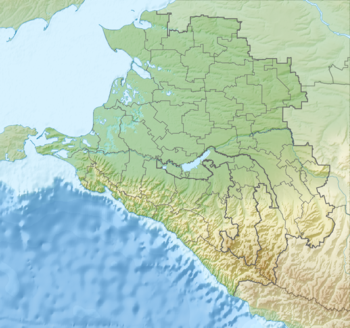Abzakhs

| Part of a series on the |
| Circassians Адыгэхэр |
|---|
 List of notable Circassians |
| Circassian diaspora |
| Circassian tribes |
|
Surviving Destroyed or barely existing |
| Religion |
|
Religion in Circassia |
| Languages and dialects |
|
| History |
|
Ancient Medieval Modern
Contemporary Key battles |
| Culture |
The Abzakh (Circassian: Абдзах, Abdzax; Russian: абадзехи; also known as Abdzakhs or Abadzekhs) are one of the twelve major Circassian tribes, representing one of the twelve stars on the green-and-gold Circassian flag.[1] Historically, they lived in the mountainous part of the modern Russian republics of Adygea and Krasnodar Krai. Major settlements or villages were located in the river valleys Kurdzhips, , Pshish, and Psekups.
However, today the vast majority of them live in diaspora in Turkey — about 500,000 people, which are the descendants of those expelled from their homeland as a result of the Russian–Circassian War and Circassian genocide. After Kabardians, the Abzakh are the second-largest Adyghe tribe in Turkey, other diaspora countries, and in the world in general. They are also the second-largest Adyghe tribe in Palestine (after Shapsugs), largest in Jordan, and the sixth-largest in Russia.
The Abzakhs are not to be confused with the Abkhazians or the Abaza, yet the naming "abadz'ekh" in Circassian language means "the people who live under the Abazas", but they are different in language
History[]
Before the Caucasian War, Abzakhs inhabited the northern slope of the Caucasus mountain range, near the land of the Shapsug tribe. After the Caucasian war, most Abzakhs (and other tribes) were deported to the Ottoman Empire, the remaining Abzakhs were relocated to the present-day steppe Shovgenovsky District in Adygea.
Culture[]
The Abzakh tribe was traditionally divided into nine companies, managed by elected elders. In discussing and resolving important issues elders agreed in a general meeting. The Abzakh tribe engaged in arable farming and horticulture, and kept many animals, especially prized horses. In the mountains, the Abzakh mined copper, iron, lead, and silver.
Since the early 19th century, their dominant religion is Sunni Islam.
Language[]
The Abzakh people speak a sub-dialect (Adyghe: Абдзахэбзэ) of the West Adyghe dialect of the Circassian language.[2]
Israel[]
About 1,123 Abzakh people live in the Rehaniya, in Galilee (Northern District, Israel), where there is an Adyghe museum.
In 1958, Abzakhs (and other Adyghe tribes) of Israel were allowed to enter military service, which gave them a number of privileges. In Israel, the Abzakh are the second largest Adyghe tribe, after the Shapsug.
Notable people[]
- Hulusi Salih Pasha (1885–1939); Ottoman Grand Vizier (1920), admiral, the first Minister of Navy of the Republic of Turkey
See also[]
- Other Circassian tribes:
- Besleney
- Bzhedug
- Hatuqwai
- Kabardian
- Mamkhegh
- Natukhai
- Shapsug
- Temirgoy
- Ubykh
- Yegeruqwai
- Zhaney
References[]
- ^ "Circassians". Adiga-home.net. 2010. Archived from the original on August 20, 2014. Retrieved 17 May 2016.
The 12 Circassian tribes: Abadzeh Besleney Bzhedug Yegeruqay Zhaney Kabarday Mamheg Natuhay Temirgoy Ubyh Shapsug Hatukay. The twelve stars on the Adyghe flag also refer to the twelve tribes.
CS1 maint: unfit URL (link) - ^ Abzakh sub-dialect Archived 2015-05-18 at the Wayback Machine (in French)
- Circassians
- Circassian tribes
- History of Kuban
- Ethnic groups in Russia
- Ethnic groups in Turkey
- Adygea
- Galilee
